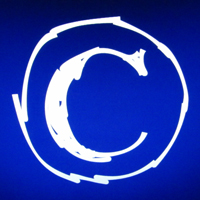1. Open a new document, 1500px by 1000px, and fill the background with black.
Duplicate the black layer and label it “Small Stars.†Go to Filter>Noise>Add Noise, selecting Monochomatic, Gaussian, and 10%. Under Image>Adjustments, Brightness and Contrast, reduce the Brightness to -30, and increase the contrast to +75.
Duplicate this layer and label it “Large Stars.†Under Image>Adjustments, Brightness and Contrast, reduce the Brightness to -100, and increase the contrast to +67 and click OK. Under Image>Adjustments>Levels, enter 235, 1.00, and 250 into the “Input Level boxes, and click OK.
With the Erase Tool, select a non-round brush, reduce the opacity to 85%, and under Brushes Palette Presets, check the “Scattering, Texture, Dual Brush, and Noise†boxes. Randomly erase a large portion of the layer. Be brutal (see image example). Change the blending mode to “Screen.
Go to the “Small Stars†layer beneath, and repeat the erasing, but not as brutally. Then using the Clone Stamp Tool, with the Aligned and Sample all Layers boxes checked, clone in areas of your starfield. Change brushes and sizes to taste, and vary between Normal and Screen cloning modes. When satisfied, merge all layers down (Ctrl+Shift+’E’) and label the layer “Stars.†Save your work
Duplicate the black layer and label it “Small Stars.†Go to Filter>Noise>Add Noise, selecting Monochomatic, Gaussian, and 10%. Under Image>Adjustments, Brightness and Contrast, reduce the Brightness to -30, and increase the contrast to +75.
Duplicate this layer and label it “Large Stars.†Under Image>Adjustments, Brightness and Contrast, reduce the Brightness to -100, and increase the contrast to +67 and click OK. Under Image>Adjustments>Levels, enter 235, 1.00, and 250 into the “Input Level boxes, and click OK.
With the Erase Tool, select a non-round brush, reduce the opacity to 85%, and under Brushes Palette Presets, check the “Scattering, Texture, Dual Brush, and Noise†boxes. Randomly erase a large portion of the layer. Be brutal (see image example). Change the blending mode to “Screen.
Go to the “Small Stars†layer beneath, and repeat the erasing, but not as brutally. Then using the Clone Stamp Tool, with the Aligned and Sample all Layers boxes checked, clone in areas of your starfield. Change brushes and sizes to taste, and vary between Normal and Screen cloning modes. When satisfied, merge all layers down (Ctrl+Shift+’E’) and label the layer “Stars.†Save your work
























